It was late September, just a few weeks before the end of Gurrang, one of Arnhem Land's six seasons. Smoke rose from the floodplains where the local women hunt long-necked turtles. The fire stripped the tall grass, revealing holes that could give away a turtle hiding beneath the mud. The women poked sticks down the holes, listening for a tap on the turtle shell.
Subscribe now for unlimited access.
or signup to continue reading
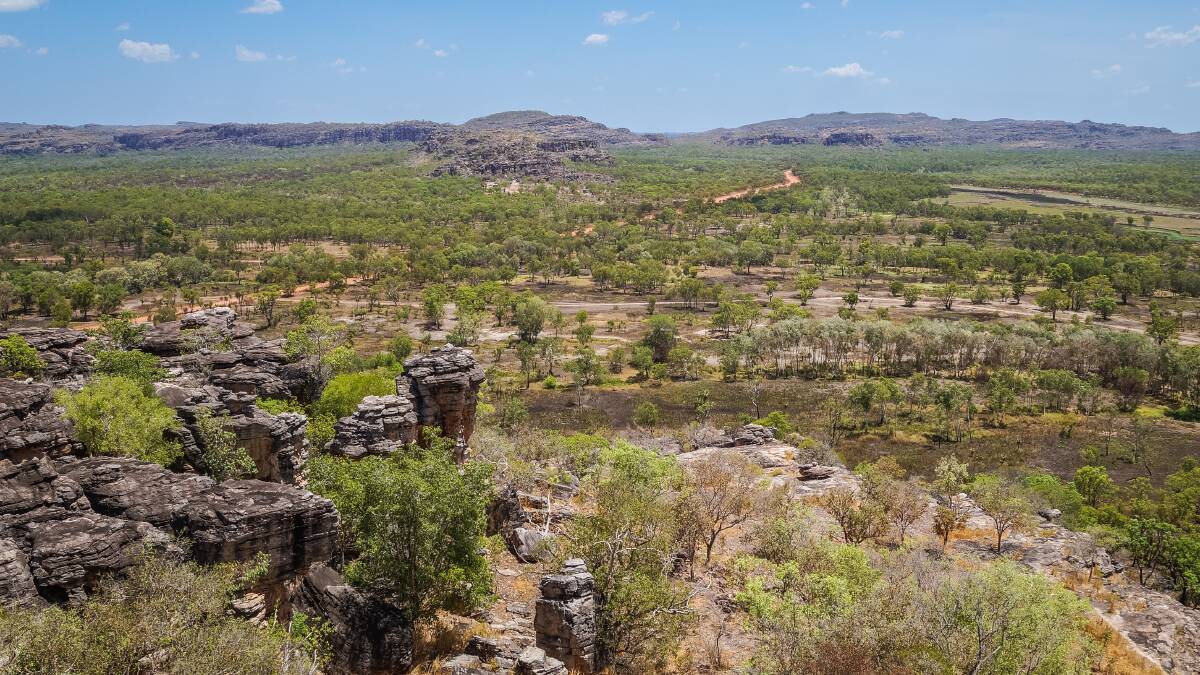
The smoke drifted west as we drove along a corrugated dirt road to Gunbalanya. Also known as Oenpelli, it's one of the largest communities in Arnhem Land, a huge region of Aboriginal-owned land about 600 kilometres east of Darwin.
"It's not a tourism destination. It's a community hub that we've been invited to," we were told as we made the pre-dawn drive through Kakadu National Park.
It was low tide as we crossed East Alligator River at Cahill's Crossing. A few fishermen stood uncomfortably close to the water; easy targets for the crocs. During the Northern Territory's wet season, from November to April, Gunbalanya is cut off to traffic at this point.
We had come on a day tour, the easiest way to visit Arnhem Land. Private visits require a permit, granted only with the permission of traditional owners.
Cahill's Crossing was a geographical, cultural and visual border. The thick trees that hugged the road for most of the drive transformed into open plains, lotus-framed billabongs, and the rising formations of Stone Country.
The bus drove briefly through the streets of Gunbalanya, a community learning to balance changing times and the preservation of culture and way of life. It was established as a mission in the 1920s. Now a town of 1200 people, it's been under the control of an Aboriginal town council for more than 40 years.
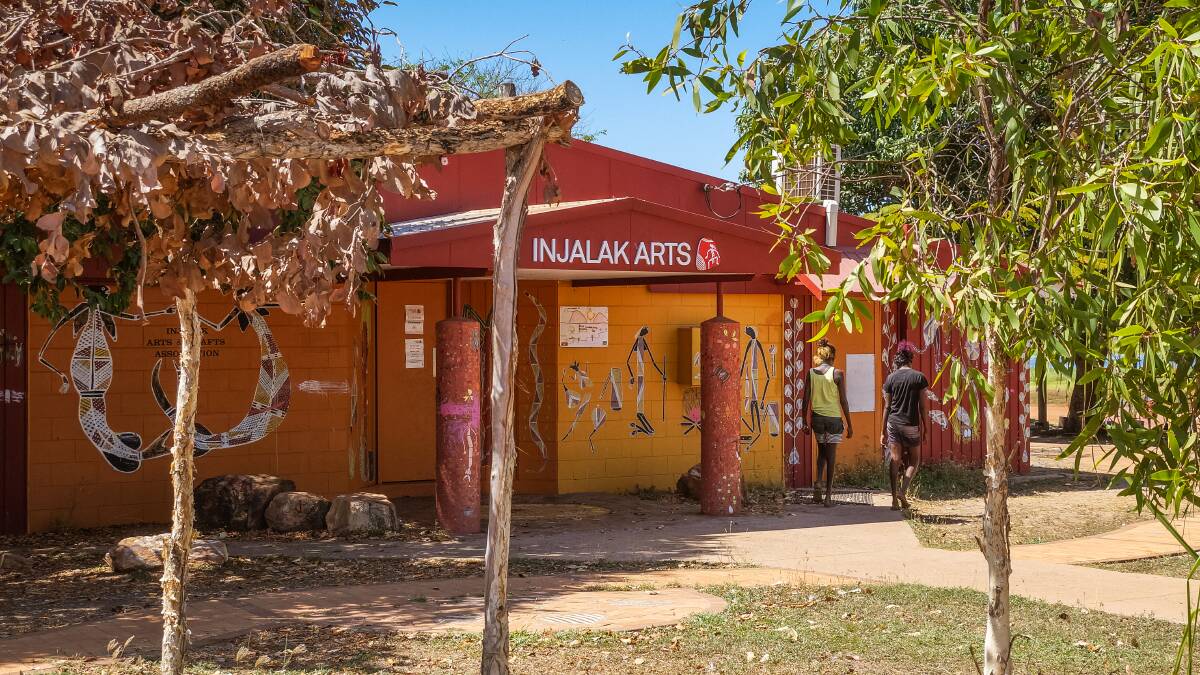
Injalak Arts, the first stop on our tour, is a non-profit Aboriginal-owned social enterprise. As the market for Indigenous arts and craft has grown, so too has the organisation that began in a small shed in 1989.
The centre has provided opportunities for local residents in a town where jobs are scarce. It brings visitors in, and tours to see the Aboriginal rock art at the nearby Injalak Hill are popular. But the benefits are more than economic. The arts centre has become a social hub. Many of the artists are self-taught, learnt from family, or fell into the hobby by visiting the centre.
Some of the fabric printed using the centre's giant screenprinting space is sent to Cambodia, where fair trade manufacturers turn it into clothing, bags and cushion covers.
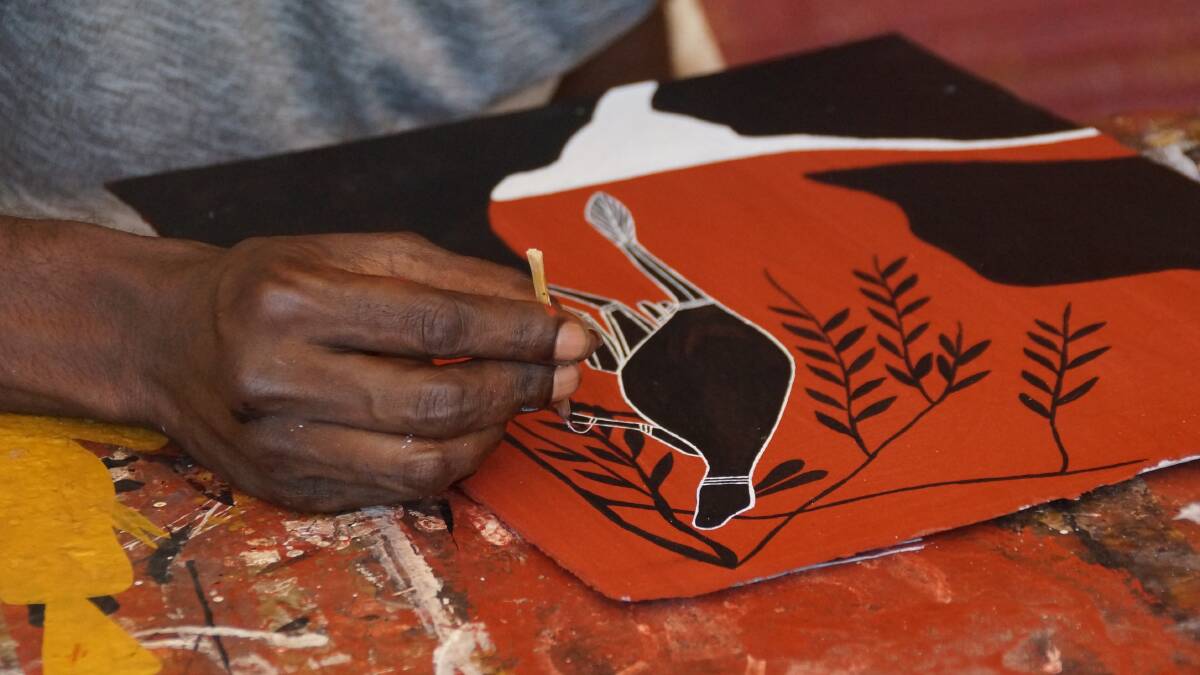
Outside, artists sought shade under the verandas. Buckets were filled with soaking brushes and sticks, and paint touched nearly every surface.
Most of the artists were shy but patient with our small tour group as we admired their work and asked questions. The artwork produced at the centre varied from artist to artist, but most were inspired by the rock art on Injalak Hill and depicted animals, bush food and Dreaming stories. Earth tones dominated compared to the bright colours often used in dot painting, more common in central Australia.
Around the corner, away from the men and their painting, three women sat under a large mango tree weaving. The pandanus leaves had been harvested nearby. One of the ladies held the leaves between her toes, while expertly tearing them into thin strips, ready to be coloured. A fire a few metres away boiled flowers, berries, leaves and roots to make dye.
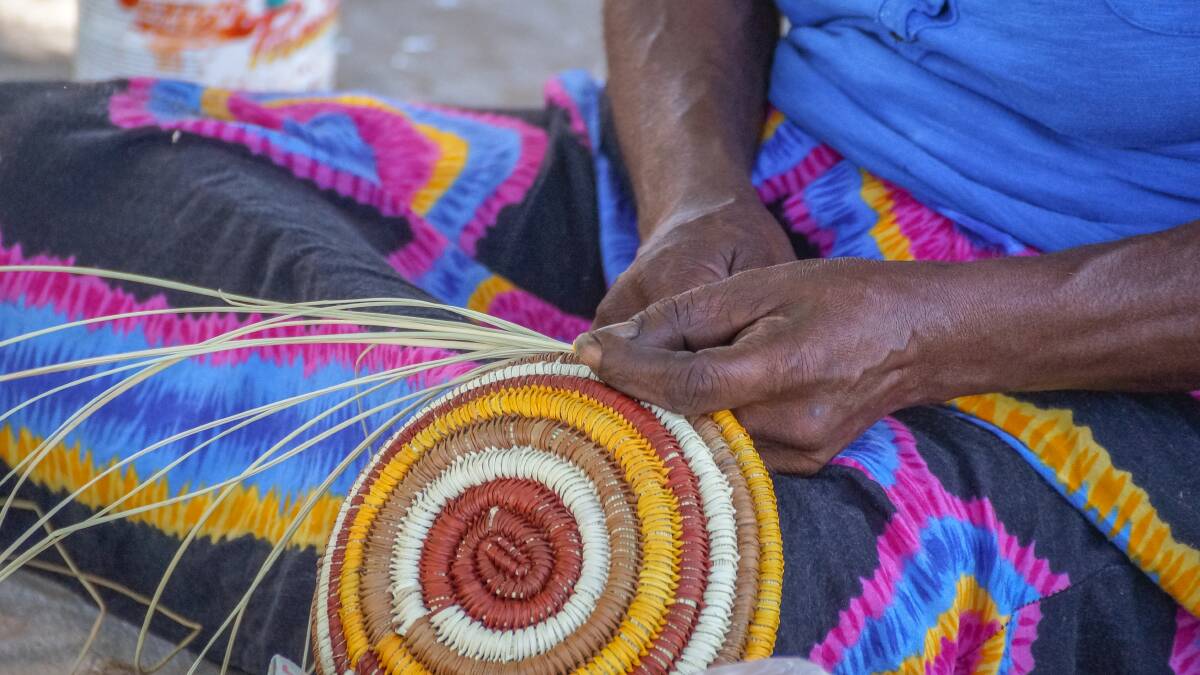
I could have spent hours watching and learning, but noon was approaching, and with it, the sapping Top End heat.
To the east of the arts centre, past the billabong, rises Injalak Hill - a labyrinth of boulders, stone pillars and giant rock faces. It has become an attraction for tourists visiting Gunbalanya, but it's also an important Dreaming site and tourists must be accompanied by an Aboriginal guide.
Going back as far as 30,000 years ago, Aboriginal people have used rock art to tell stories and share information on Injalak Hill. The layers of drawings on Injalak are the work of generations. While some date back further than most of us could comprehend, other pieces were drawn as recently as 100 years ago.
The walk was steep and tricky in places, but the heat was the biggest battle. The temperature rose close to 38 degrees, with high humidity, we walked through narrow passages and crevices to see the galleries.
Many drawings show Yingana or Warramurruggunddji (the Creation Mother). A poster inside the arts centre had described the female creation ancestor, carrying dilly bags, who dropped spirit children in particular country and told them what language to speak.
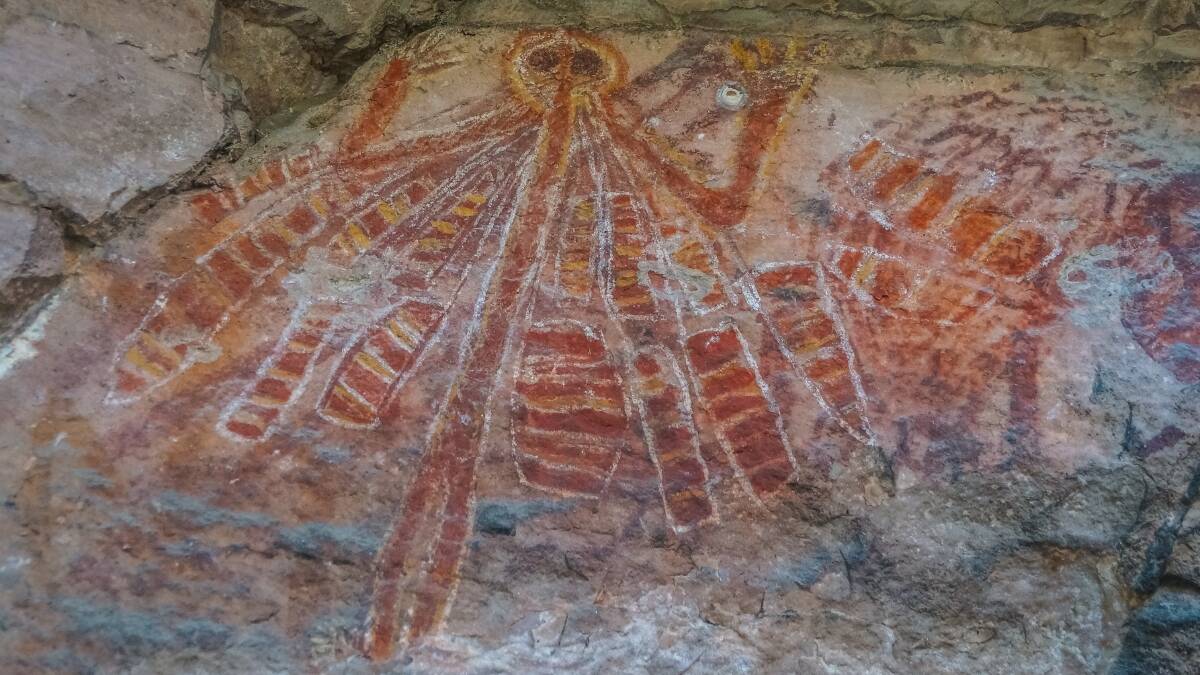
We climbed to a rock ledge for lunch, overlooking Gunbalanya and the expanse of floodplains. The smoke from the fires swept across the horizon.
On the way down, we visited the only place we weren't permitted to photograph, a traditional burial site. When Balanda (white men) began exploring Arnhem Land, bones were taken from the burial sites - some were kept by museums for decades. In 2011, the Smithsonian Institute in Washington DC returned skeletons taken during an expedition in 1948.
By the time we returned to Cahill's Crossing the tide had risen. The fishermen had gone but the crocs lurked. With the drive through the river, we left Arnhem Land, crossing the fast-flowing border that felt more significant now, knowing what a special place lay on the other side.
TRIP NOTES
- Kakadu Tours and Travel's one-day Arnhem Land Injalak Hill runs between May and October and costs $279 for adults and $219 for children.
- Injalak Arts Centre is closed on Sundays and public holidays.
- For more information visit kakadutoursandtravel.com.au and injalak.com

